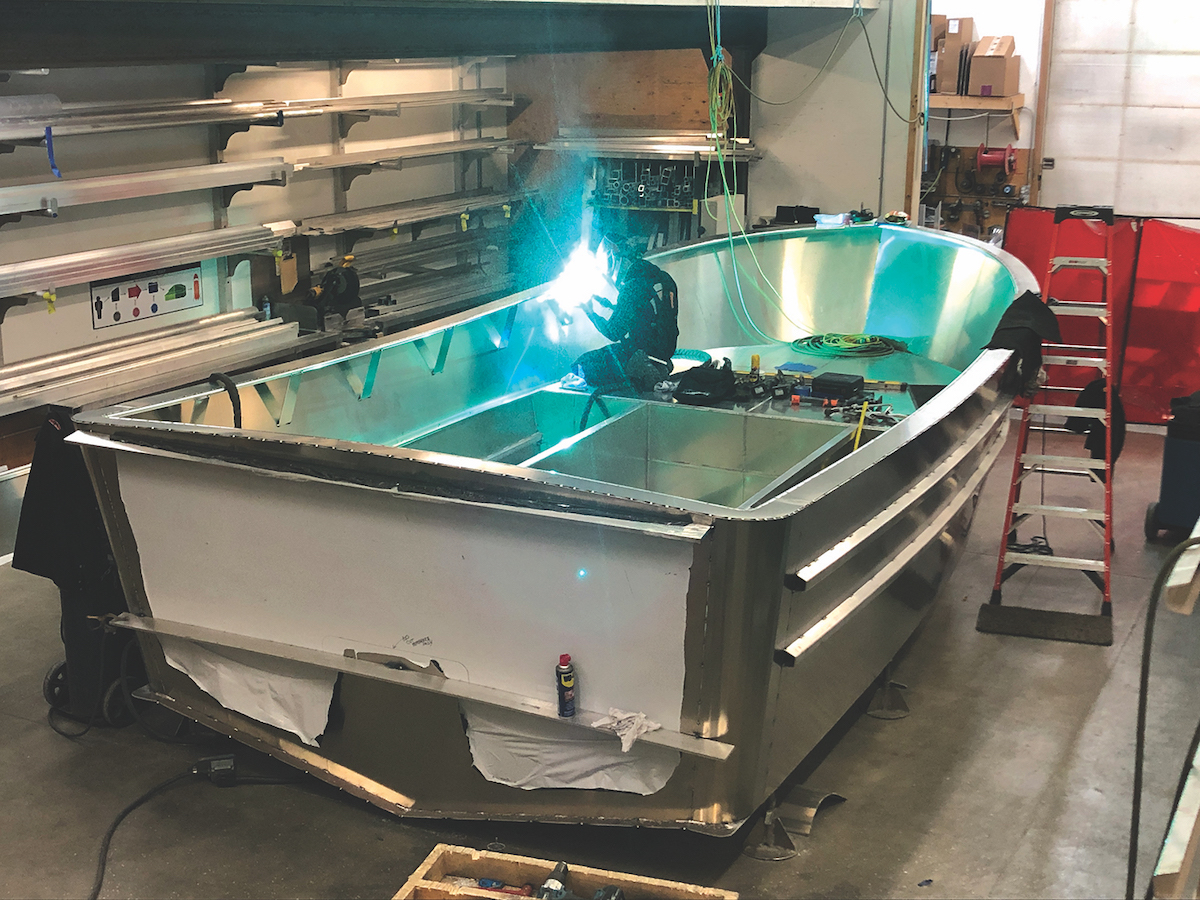Since Bay Welding Services launched the 54-foot salmon tender St. Lawrence in June 2017, the Homer, Alaska, boatshop has gone through a bit of a dry spell as far as building commercial fishing boats — plenty of catamaran passenger boats but not fishing boats.
That’s changing, starting with a seine skiff for a Kodiak fisherman that will be followed by a Bristol Bay gillnetter. The 21' x 11' 6" seine skiff “will be noteworthy. Will have the next level jet,” says Bay Welding’s Eric Engebretsen.
He’s talking about the 20-inch HI500 waterjet from Thrustmaster. This is the first HI500 waterjet to go into a Bay Welding Services seine skiff. Previous jets were 18-inch Traktor Jets. Those skiffs generated “pretty impressive pull numbers,” with one skiff producing 4,500 pounds of bollard pull.
Engebretsen estimates that the skiff currently being built with the larger 20-inch pump “will pull about 6,000 pounds. It’s a big jet for a skiff but jumps up to next level of pulling power.”
Engebretsen puts the skiff’s 11-foot 6-inch beam at the “upper limit” for seine skiffs, but it’s needed “to handle all that pulling power.” If she starts to go sideways, the extra beam will help to keep her stable.
Normally the beam would be 9 to 10 feet. “Skiffs have a hard life,” notes Engebretsen. “Staring into the weather all the time and just hammering on the back of the seine boat.” So this skiff’s bow area will be double plated and will have extra framing on the inside.
“Fishermen,” he adds, “will still figure out how to break it, but it will take longer.”
Bay Welding Services has built Puget Sound bowpickers and repowered Bristol Bay gillnetters, but the gillnetter to be built next winter for a Homer, Alaska, fisherman will be the first newbuild for Bristol Bay. Engebretsen says it will be a standard 32' x 15' house-forward, twin-jet gillnetter.
Engebretsen is calling the design the Bridge Boat because of the manner in which it will be transported to Bristol Bay. There are two ways to get a gillnetter from Homer to Bristol Bay. You can go by water, or cross Cook Inlet to the Williamsport portage then trailer it up a long, winding mountain road that ends up at Iliamna Lake. There the gillnetter gets put in the water and driven to Bristol Bay.
The problem is there’s a bridge on the mountain road with trestles above it that limits a boat’s width to 15 feet. That allows an inch of clearance on each side of the boat when crossing the bridge. Going the bridge route saves four to six days’ travel to Bristol Bay, as opposed to going by water.







